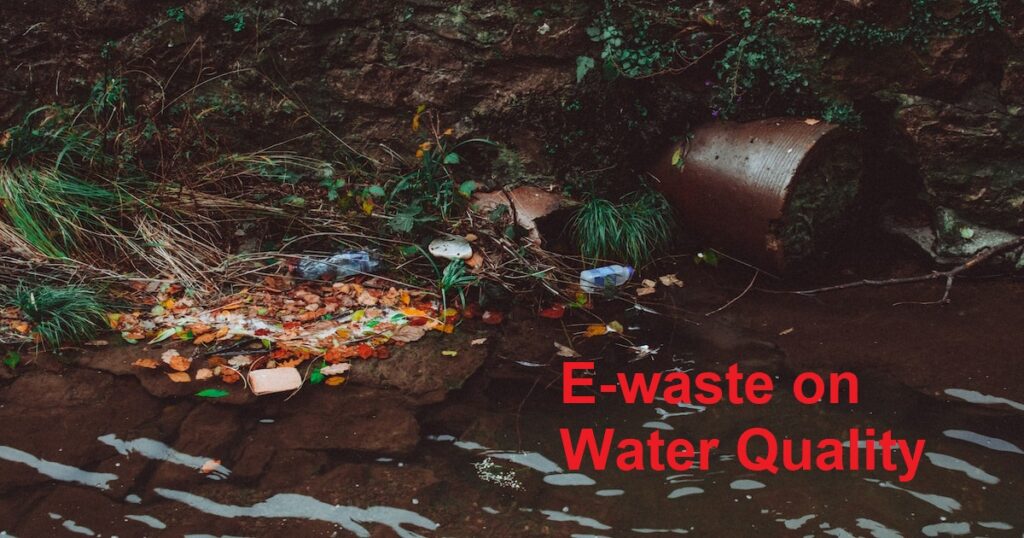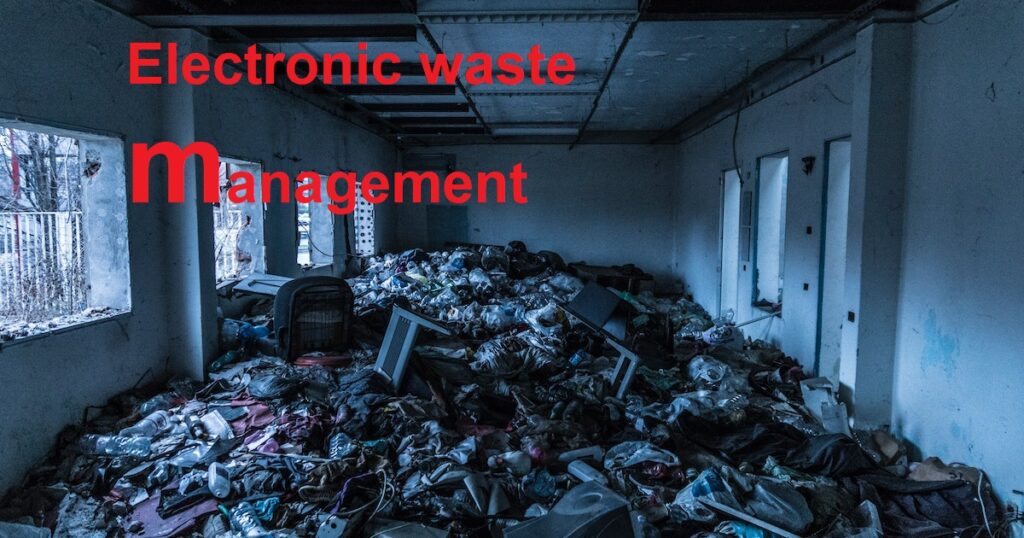Electronic waste, or e-waste, refers to discarded electronic devices that are no longer usable or needed. As technology advances and electronic devices become more prevalent in our daily lives, the amount of e-waste generated continues to rise. This article will provide a comprehensive overview of the environmental risks associated with e-waste, including the impact on air, water, and soil quality, as well as the potential health hazards to humans and wildlife.
Introduction
E-waste is a growing problem worldwide, with millions of tons of electronic devices being discarded each year. While these devices can contain valuable materials that can be recycled or repurposed, they also contain a range of hazardous chemicals that can cause significant environmental damage if not properly disposed of.
What is e-waste?
E-waste is defined as any electronic device that is no longer in use or is no longer functional. This can include everything from smartphones and laptops to televisions and refrigerators. These devices often contain hazardous materials such as lead, mercury, cadmium, and brominated flame retardants.
The Impact of E-waste on air quality
When e-waste is not properly disposed of, it can release harmful chemicals into the air. This can occur during the dismantling and recycling process or when e-waste is burned in an attempt to recover valuable materials. The release of these chemicals can lead to respiratory problems, including asthma and bronchitis, as well as long-term health issues such as cancer.
The Impact of E-waste on Water Quality
Electronic devices contain a range of chemicals that can be harmful to water quality. When e-waste is not properly disposed of, these chemicals can leach into groundwater or surface water, contaminating drinking water sources and harming aquatic ecosystems. In addition, the process of recycling e-waste can also require significant amounts of water, further exacerbating the impact on water resources.

The Impact of E-waste on soil quality
When e-waste is not properly disposed of, it can also have a negative impact on soil quality. The hazardous chemicals found in electronic devices can leach into the soil, contaminating crops and potentially harming wildlife. In addition, the disposal of e-waste in landfills can lead to the release of methane gas, a potent greenhouse gas that contributes to climate change.
Health risks associated with e-waste
The hazardous chemicals found in e-waste can pose a significant risk to human health. When these chemicals are released into the environment, they can contaminate the air, water, and soil, potentially causing a range of health problems. In addition, workers who are involved in the dismantling and recycling of e-waste are often exposed to high levels of these chemicals, which can lead to both acute and chronic health problems.
Electronic waste management
Proper management of e-waste is essential in order to minimize its environmental and health risks. This can include measures such as reducing the amount of e-waste being generated through improved product design, promoting recycling and reuse of electronic devices, and implementing safe and responsible disposal methods.
One effective approach to managing e-waste is through the implementation of extended producer responsibility (EPR) programs. Under EPR programs, manufacturers are responsible for the proper disposal of their products at the end of their lifecycle, incentivizing them to design products that are easier to recycle and dispose of safely.
In addition, there is a range of other strategies that can be used to manage e-waste, such as refurbishing and reselling electronic devices, repurposing them for other uses, and recovering valuable materials through recycling. These strategies can help to reduce the amount of e-waste that ends up in landfills or is incinerated, reducing its environmental impact.

Conclusion
Electronic waste is a growing problem worldwide, with significant environmental and health risks associated with improper disposal. The release of hazardous chemicals into the air, water, and soil can have a negative impact on human and wildlife health, as well as contribute to climate change. Proper management of e-waste, including the implementation of extended producer responsibility programs and the promotion of recycling and reuse, is essential in order to mitigate these risks and create a more sustainable future.
FAQs
What are some of the hazardous chemicals found in electronic devices? How does e-waste contribute to climate change? What is extended producer responsibility? Can electronic devices be safely recycled? What can individuals do to reduce their e-waste footprint?
- What are some of the hazardous chemicals found in electronic devices?
Electronic devices contain a range of hazardous chemicals, including lead, mercury, cadmium, and flame retardants. These chemicals can have negative health impacts on both humans and wildlife, particularly when they are released into the environment through improper disposal or recycling methods.
- How does e-waste contribute to climate change?
E-waste contributes to climate change in a number of ways. The production and disposal of electronic devices requires significant amounts of energy and resources, leading to the release of greenhouse gases into the atmosphere. In addition, when e-waste is incinerated, it releases toxic chemicals and pollutants into the air, further contributing to climate change.
- What is extended producer responsibility?
Extended producer responsibility (EPR) is a policy approach that places the responsibility for the proper disposal of products at the end of their lifecycle on the manufacturers. This incentivizes manufacturers to design products that are easier to recycle and dispose of safely, reducing the environmental impact of electronic devices and other products.
- Can electronic devices be safely recycled?
Yes, electronic devices can be safely recycled when proper recycling methods are used. This involves separating the components of the device and recovering valuable materials, such as metals and plastics, for reuse. It is important to ensure that e-waste is recycled by certified recyclers who use safe and responsible methods.
- What can individuals do to reduce their e-waste footprint?
Individuals can reduce their e-waste footprint by taking a number of actions, including:
- Choosing to repair or refurbish electronic devices instead of buying new ones
- Donating or reselling unwanted electronic devices instead of throwing them away
- Recycling e-waste through certified recyclers who use safe and responsible methods
- Choosing to buy products from companies that prioritize sustainability and responsible disposal methods
- Limiting the number of electronic devices they purchase and properly disposing them at the end of their lifecycle.
